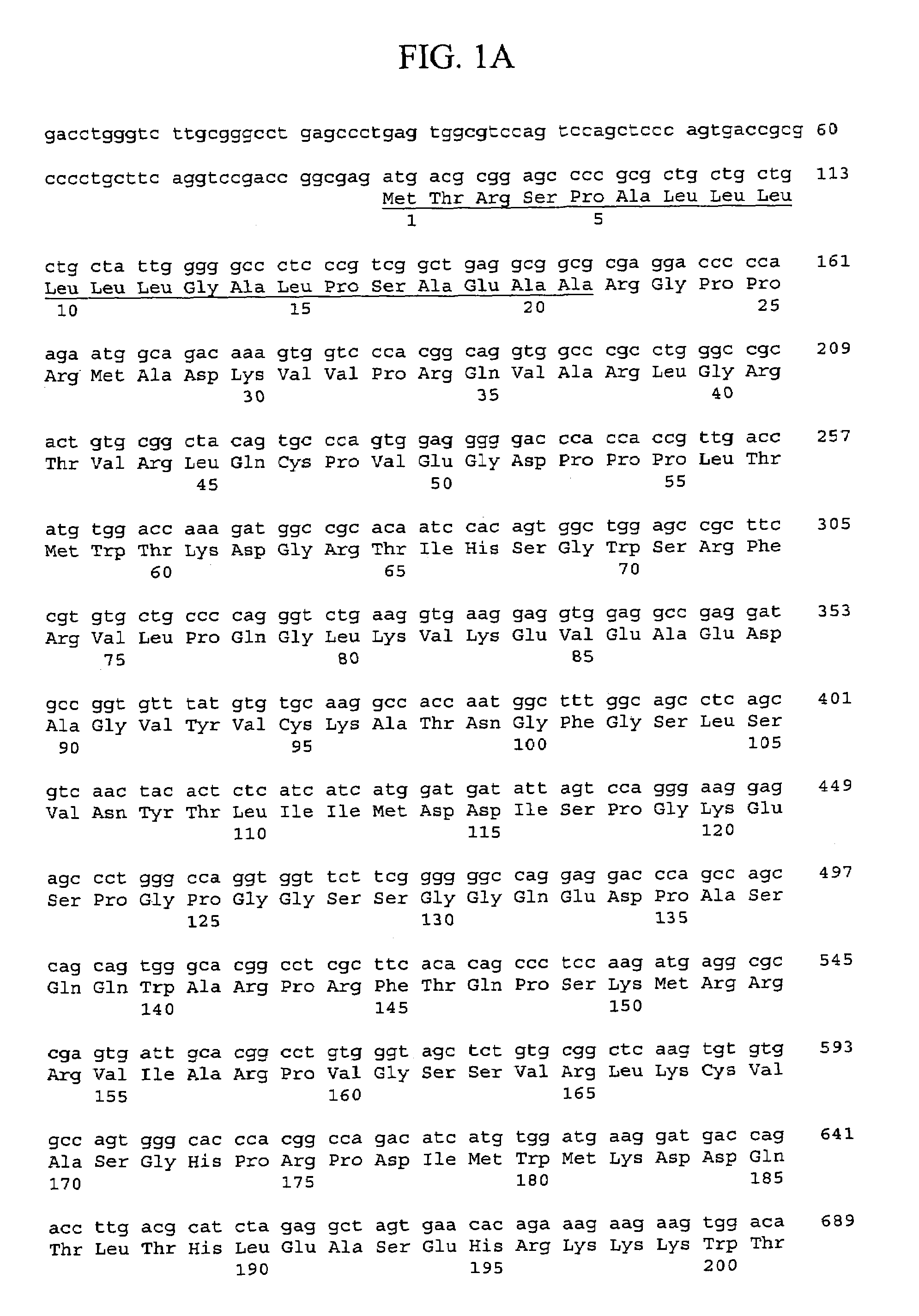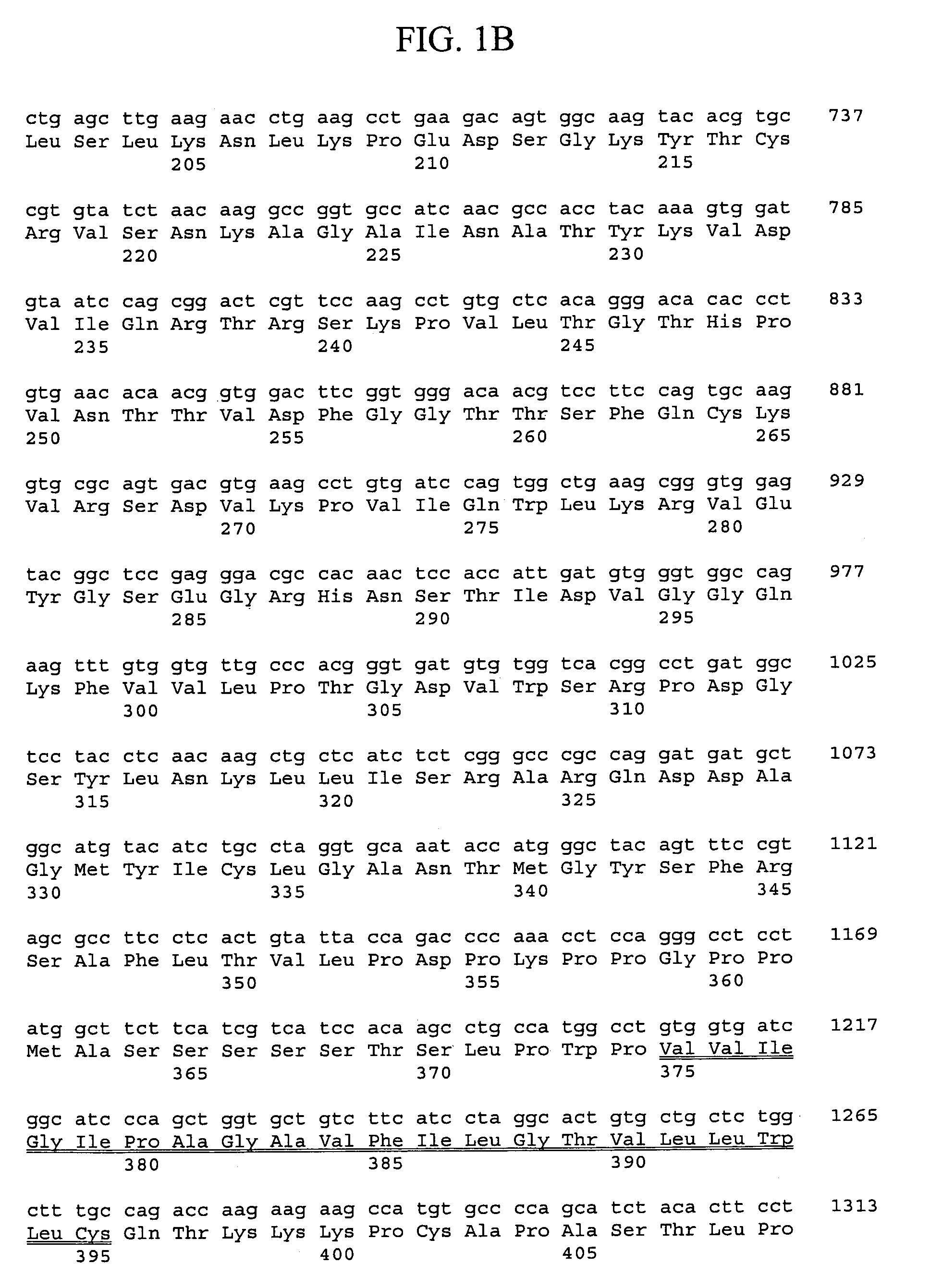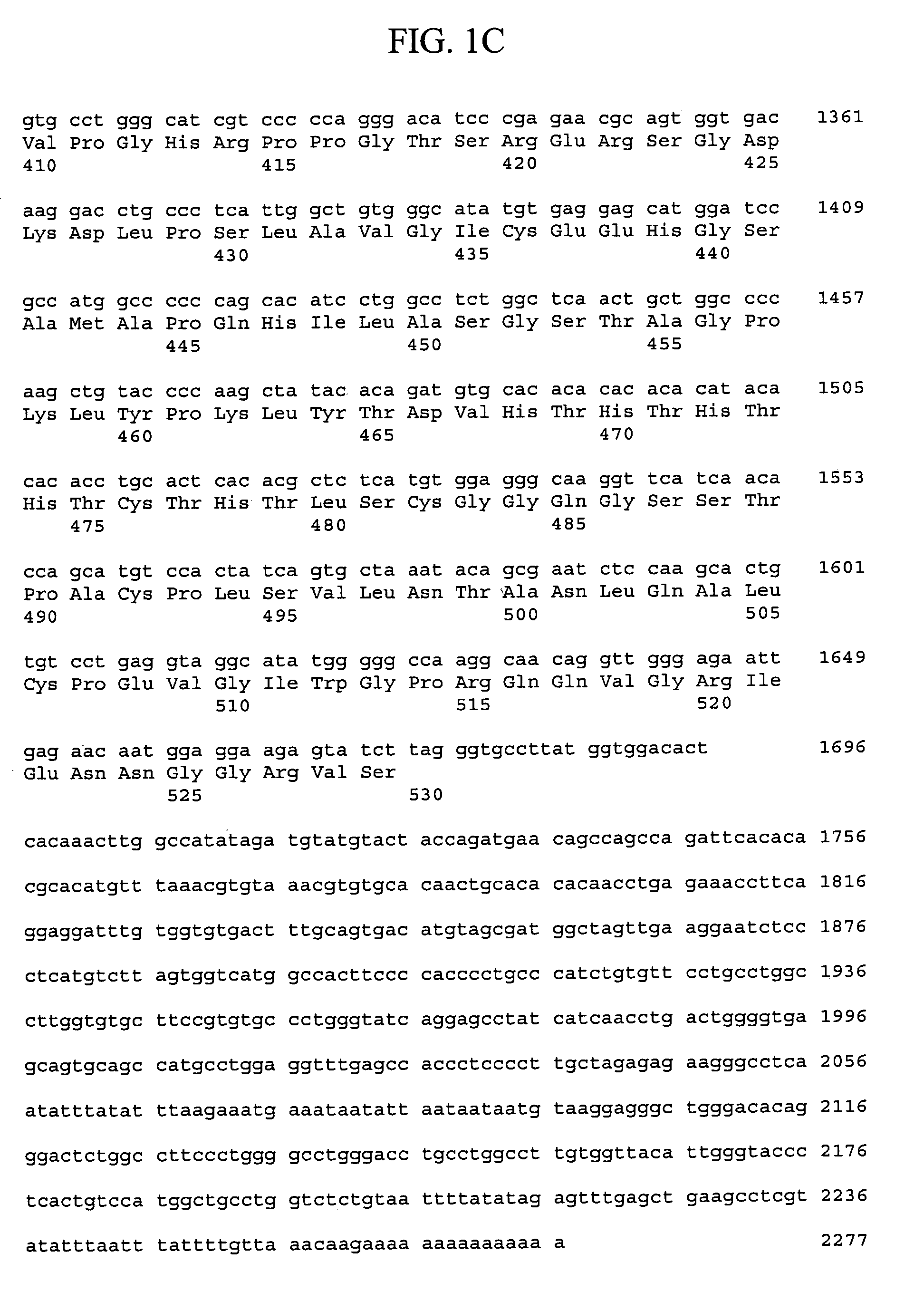Nucleic acids encoding fibroblast growth factor receptor-like proteins and uses thereof
a technology of fibroblast growth factor and nucleic acids, which is applied in the field of nucleic acid molecules encoding fibroblast growth factor receptor-like proteins, can solve the problem that the potential for the development of novel therapeutics based on the human genome is still largely unrealized
- Summary
- Abstract
- Description
- Claims
- Application Information
AI Technical Summary
Problems solved by technology
Method used
Image
Examples
example 1
Cloning of the Murine FGFR-L Polypeptide Gene
[0338]Generally, materials and methods as described in Sambrook et al. supra were used to clone and analyze the gene encoding rat FGFR-L polypeptide.
[0339]Sequences encoding the murine FGFR-L polypeptide were isolated from a mouse cDNA library derived from a mixture of two hematopoietic stem cell supportive bone marrow stromal cell lines (F4 and F10). Murine bone marrow stromal cell lines D3, F4, and F10 were obtained from Dr. R. Ploemacher (Erasmus University, Rotterdam, The Netherlands) and cultured at 32° C. and 5% CO2 in IMDM supplemented with 10% fetal bovine serum, 5% horse serum, 2 mM glutamine, 0.1 mM β-mercaptoethanol and 1 μM hydrocortisone (Na Succinate salt). A mouse bone marrow stromal cDNA library was prepared by isolating RNA from F4 and F10 cells using the Trizol method (LTI). Poly-A RNA was purified using oligo-dT magnetic beads (Dynal) and equal amounts of poly-A RNA (1.5 ug each of F4 and F10 RNA) were mixed. An oligo-d...
example 2
Cloning of the Human FGFR-L Polypeptide Gene
[0344]Generally, materials and methods as described in Sambrook et al. supra are used to clone and analyze the gene encoding human FGFR-L polypeptide.
[0345]A human spleen and mixed tissue cDNA library was prepared as follows. Total RNA was extracted from human tissues using Trizol extraction procedures (Gibco-BRL, Rockville, Md.) and poly-A+ RNA was selected from this total RNA using Dynabeads (Dynal, Oslo, Norway) according to the manufacturer's recommended protocol. Random primed or oligo(dT) primed cDNA was synthesized from this poly-A+ RNA using the the Superscript Plasmid System for cDNA Synthesis and Plasmid Cloning kit (Gibco-BRL, Rockville, Md.) according to the manfacturer's recommended protocol. The resulting cDNA was digested with appropriate restriction enzymes and cloned into the pSPORT 1 vector. Ligation products were transformed into E. coli using standard techniques known in the art and transformants were selected on bacter...
example 3
FGFR-L mRNA Expression
[0349]The expression of FGFR-L mRNA was examined by Northern blot analysis. Multiple murine and human tissue northern blots (Clontech) were probed with a 32P-dCTP labeled, 234 bp PCR fragment corresponding to a portion of the human FGFR-L gene (see Example 2). Additional blots containing RNA isolated from a variety of cell lines were also screened with this probe.
[0350]Northern blots were prehybridized for 2 hours at 42° C. in 5×SSC, 35% deionized formamide, 0.05% (w / v) sodium pyrophosphate, 20 mM sodium phosphate pH 6.8, 5 mM EDTA, 5×Denhardt's solution, 0.2% SDS, and 94 μg / mL denatured salmon sperm DNA, and then were hybridized at 42° C. overnight in fresh prehybridization buffer containing approximately 1 ng / mL of the labeled probe. Following hybridization, the filters were washed once in prehybridization buffer for 5 minutes at room temperature, once for 5 minutes at room temperature in 2×SSC and 0.1% SDS, and then twice for 20 minutes at 42° C. in 2×SSC an...
PUM
| Property | Measurement | Unit |
|---|---|---|
| melting temperature | aaaaa | aaaaa |
| melting temperature | aaaaa | aaaaa |
| melting temperature | aaaaa | aaaaa |
Abstract
Description
Claims
Application Information
 Login to View More
Login to View More - R&D
- Intellectual Property
- Life Sciences
- Materials
- Tech Scout
- Unparalleled Data Quality
- Higher Quality Content
- 60% Fewer Hallucinations
Browse by: Latest US Patents, China's latest patents, Technical Efficacy Thesaurus, Application Domain, Technology Topic, Popular Technical Reports.
© 2025 PatSnap. All rights reserved.Legal|Privacy policy|Modern Slavery Act Transparency Statement|Sitemap|About US| Contact US: help@patsnap.com



